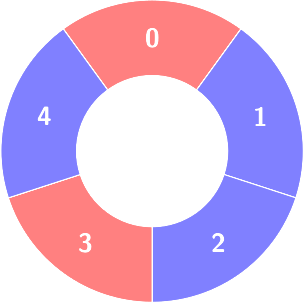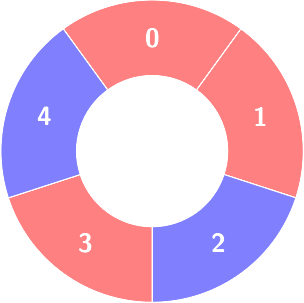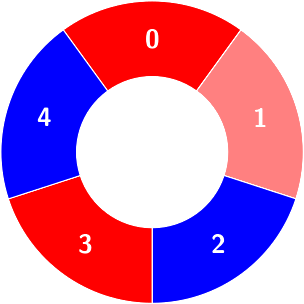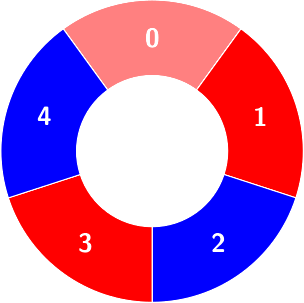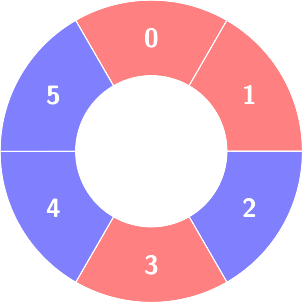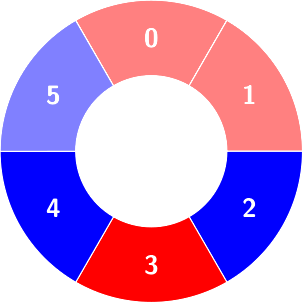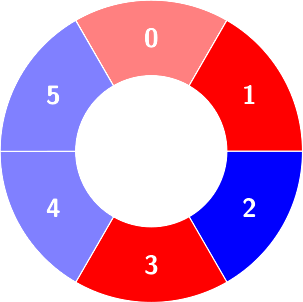Difficulty: hard
Link: https://leetcode.com/problems/alternating-groups-iii/
Contains PNG: Yes
PNG Links:
- https://assets.leetcode.com/uploads/2024/06/03/screenshot-from-2024-06-03-20-14-44.png
- https://assets.leetcode.com/uploads/2024/06/03/screenshot-from-2024-06-03-20-20-25.png
- https://assets.leetcode.com/uploads/2024/06/03/screenshot-from-2024-06-03-20-25-02-2.png
- https://assets.leetcode.com/uploads/2024/06/03/screenshot-from-2024-06-03-20-24-12.png
- https://assets.leetcode.com/uploads/2024/06/03/screenshot-from-2024-06-03-20-35-50.png
- https://assets.leetcode.com/uploads/2024/06/03/screenshot-from-2024-06-03-20-37-13.png
- https://assets.leetcode.com/uploads/2024/06/03/screenshot-from-2024-06-03-20-36-40.png
There are some red and blue tiles arranged circularly. You are given an array of integers colors and a 2D integers array queries.
The color of tile i is represented by colors[i]:
colors[i] == 0means that tileiis red.colors[i] == 1means that tileiis blue.
An alternating group is a contiguous subset of tiles in the circle with alternating colors (each tile in the group except the first and last one has a different color from its adjacent tiles in the group).
You have to process queries of two types:
queries[i] = [1, sizei], determine the count of alternating groups with sizesizei.queries[i] = [2, indexi, colori], changecolors[indexi]tocolori.
Return an array answer containing the results of the queries of the first type in order.
Note that since colors represents a circle, the first and the last tiles are considered to be next to each other.
Example 1:
Input: colors = [0,1,1,0,1], queries = [[2,1,0],[1,4]]
Output: [2]
Explanation:
First query:
Change colors[1] to 0.
Second query:
Count of the alternating groups with size 4:
Example 2:
Input: colors = [0,0,1,0,1,1], queries = [[1,3],[2,3,0],[1,5]]
Output: [2,0]
Explanation:
First query:
Count of the alternating groups with size 3:
Second query: colors will not change.
Third query: There is no alternating group with size 5.
Constraints:
4 <= colors.length <= 5 * 1040 <= colors[i] <= 11 <= queries.length <= 5 * 104queries[i][0] == 1orqueries[i][0] == 2- For all
ithat:queries[i][0] == 1:queries[i].length == 2,3 <= queries[i][1] <= colors.length - 1queries[i][0] == 2:queries[i].length == 3,0 <= queries[i][1] <= colors.length - 1,0 <= queries[i][2] <= 1
- 1. Try using a segment tree to store the maximal alternating groups.
- 2. Store the sizes of these maximal alternating groups in another data structure.
- 3. Find the count of the alternating groups of size
kwith having the count of maximal alternating groups with size greater than or equal tokand the sum of their sizes.
class Solution {
public:
vector<int> numberOfAlternatingGroups(vector<int>& colors, vector<vector<int>>& queries) {
}
};class Solution {
public List<Integer> numberOfAlternatingGroups(int[] colors, int[][] queries) {
}
}class Solution:
def numberOfAlternatingGroups(self, colors: List[int], queries: List[List[int]]) -> List[int]:
